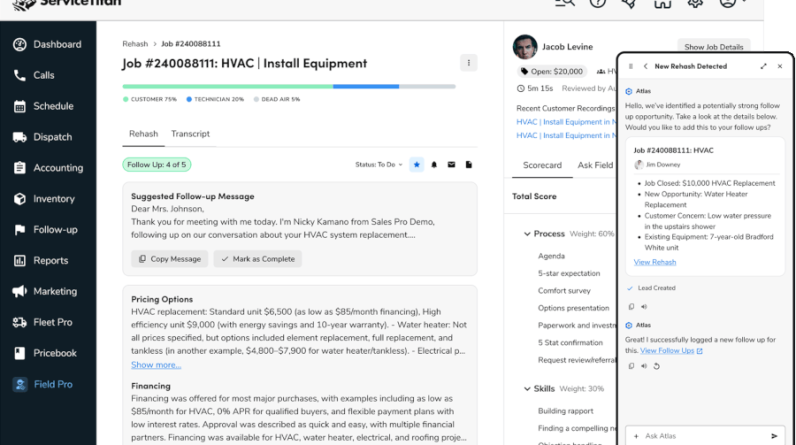Daniel Hulme, the Chief AI Officer of WPP is in India to speak at e4m TechManch 2023. On the sidelines of the event, we caught up with him to understand how AI is changing the marketing and advertising world, the most common mistakes made in the use of AI and what its limitations are.
Hulme also spoke to us about his two-year journey in WPP post-acquisition and on a host of other issues.
Edited excerpts:
What exactly is AI? A lot of things are misunderstood as Artificial Intelligence. Can you explain?
I think ultimately there are many definitions of AI, and the most popular one is getting computers to do things that humans can do. Over the past 10 years, we’ve managed to get machines to recognise objects and images to correspond in natural language. When we get machines to behave like humans and because humans are the most intelligent beings we know in the universe, we assume that intelligence is bounded by our intelligence.
Its goal is directed adaptive behaviour. It means that you’re trying to route your vehicles to maximise deliveries, or you’re trying to spend your marketing money to maximise reach or allocate your workforce to improve the well-being of a goal.
The key word is adaptive, goal-directed adaptive behaviour. What you want to do is build systems that make decisions, learn about whether those decisions are good or bad, and adapt themselves so that the next time they make better decisions. If I held most of the things that we do in the industry to that definition, nobody’s doing AI. We don’t build adaptive systems in production. Over the past few years, we’ve developed a different way of thinking about AI, not through definitions or technologies, but through its applications.
Over the past decade, new algorithms and data computing allowed us to do some really interesting things and that’s a much better way of thinking about AI.
What are some of the ways in which AI is used by WPP internally and for its clients?
It might be worthwhile talking about the six applications because they apply to any company. So, the first application is task automation. It’s using very simple algorithms and macros RPA to replace repetitive, mundane tasks that human beings are doing with essentially a very simple algorithm. They’re simple solutions, they free up a huge amount. So, it might be in our companies.
The second category is content generation. Agencies want to generate content and we all have access to now large language models and generative AI to allow us to generate content very quickly. I think what is a differentiator is organisations that can generate brand-specific content. So, if I say to a large language model, create an image of a cat holding a pen in space, it will do a very good job of that. But if I’m working on the Montblanc brand, I want it to be a Montblanc pen aligned with the Montblanc style guides, so being able to generate brand-specific content is very important.
The third category is human representation, which is replacing people. For instance, people in a call centre or salespeople can be replaced with AI that looks and behaves exactly like a human being. But what’s powerful about generative AI and large language models is that we can get AI to represent how humans think and feel about content. So, when I show you a picture of a cat holding a pen in space, you create a very different image in your mind than somebody else. And what we can do now, which we haven’t been able to do before, is use AI to reconstruct how people perceive and feel about content, which is incredibly powerful.
You can take these large language models, you can train it on, for example, review data, so all of the reviews of a particular movie or a product and then you can essentially have that represent how an audience feels about those types of products. We can also build models that represent not just target audiences, but also cultures and politicians and newspapers to see how they perceive content, to make sure that we’re creating content that doesn’t cause harm.
The fourth category is insight extraction. This is what people have been calling AI for the past decade, which is essentially using statistics, and machine learning to predict what’s going to happen. So, given this piece of content, can I predict – will it lead to a certain number of clicks and comments? What’s powerful about these modern technologies is they’re not only able to predict what’s going to happen but explain why.
Moreover, the accuracy rate depends on the data, it depends on what you’re trying to predict. For your work, again, you’re never going to get 100 per cent because the world is dynamic, but it’s accurate enough for our customers to be happy.
The fifth category is complex decision-making. In our world, we have now the ability to predict whether a piece of content is going to lead to activation. We have to push that content across lots of different channels to make sure that we’re maximising the impact for our customers, given the constraints around budget and time. That is what is called a large-scale optimisation problem, which is in a different flavour of AI than large language models.
The final category is human augmentation, where you can build digital representations of new employees and I can train that on your data. I can use that digital twin to allocate you to do jobs that align much better with your values and preferences than you might even know.
AI won’t make people jobless, it will instead elevate people to be more creative and be able to come up with lots of ideas. So, all we’re doing is freeing people up from mundane, repetitive tasks, and removing friction to enable people to explore their creative genius.
Generative AI technologies that create content autonomously have shown great potential. How do experts predict these technologies will impact businesses and society in the long term? What challenges might arise from their widespread use?
We’ll move from just creating goods that are faster, better and cheaper, and hopefully create goods and services that tap into the other things that human beings value like nostalgia and connectedness and education.
I think that the brands that are going to survive and thrive are the ones that deliver a much richer experience for consumers and also who are purposeful. So, we know now that it’s not just good enough to have a strong, profitable business. You need to have a purpose. If you don’t have a purpose, you’re not going to attract customers, you’re not going to attract talent. And I’d like to think that what we do in WPP helps companies grow and use that growth to feed that purpose.
How has it been with WPP for two years?
It’s been one of the best kinds of business decisions of my life. I run a company of 120 people. We were on a marathon. We didn’t know what the end looked like. The opportunity came along to join WPP, which had a purpose that aligns with our purpose. We want to unlock people from economic constraints to create and make a better world. And then that is WPP’s purpose, essentially. We also have an opportunity to use AI to completely reinvent an entire industry. That’s a once-in-a-lifetime opportunity.
Moreover, culturally, we’re aligned. I’m a massive fan of my peers. The leadership, the purpose, and the exposure that we get from brands. The platform that I have as Chief AI Officer is also something that I care deeply about.
How would you assess WPP India when it comes to using AI?
We’ve just been developing over the past year in light of these new advances. The first stop for me was in India to socialise that strategy, which is why I’m here, to get feedback and then to start aligning this incredible resource we have across WPP. We do have incredible talent here in India, which will grow and thrive.
I see exponential improvement in using these technologies for our project.
How equipped is Team India in the use of AI when compared to other markets?
It’s hard to put numbers. India is both strong from a creative perspective and also from a technological perspective, which is unique. Some jurisdictions are only strong in one. I’ll be using as much as I can to achieve the AI strategy and to make sure that our brands are feeling that as fast as possible.
I think we have strength and knowledge across all of those different areas, not only to improve WPP and not only to serve our brands but even as potential service integrators to provide this new infrastructure, and these new technologies for our customers. I expect to be out here a lot more.
What are the most common mistakes made when approaching the use of AI and how can they be avoided?
There are so many mistakes. So, I think what we’ve seen over the past decade is companies not understanding what AI is, not understanding the nature of their problems. They’ve been doing what everybody else does, which is hiring machine learning experts or data scientists because they think that extracting insights from data will lead to better decisions and for the most part give human beings more insights. Don’t typically mean that they make better decisions.
Decision-making is a completely different field in computer science, a completely different set of technologies and skills. I’m a big advocate of making sure that we use the right algorithms to solve that problem first and then work backwards around identifying the right insights, and the right data to drive those insights.
I think some decisions absolutely should be done by AI. I can give you an example. There are five people in this room. If I wanted to allocate five people to five jobs, there are 120 possible ways I can allocate five people, five jobs, okay? If I’ve got 15 people to allocate 15 jobs, I’ve got now a trillion ways, 15 times, 14 times. If I’ve got 60 people to allocate to 60 jobs, I’ve got now more possible combinations than there are atoms in the universe to expect a human to figure out how to allocate people, even people to do jobs beyond seven. AI can solve that problem significantly better than any human being.
There are thousands of these types of decision problems that human beings are doing, and they’re solving very badly. And if we applied AI, we can massively improve performance. So, companies are yet not open to using AI for solving problems or they’re not aware of it.
Generative AI is very good at knowing things about the world. It’s very good at telling you what it knows about the world through images and text. It is not good at making decisions. The other thing we see companies making a mistake with regards to AI is the same way that they make mistakes with technology, with software. They don’t budget for supporting those systems and maintaining them. They hire expensive people to build these AIS. And then what happens is that an expensive person ends up supporting those five AIs, and they don’t get to do more interesting things.
(Read the Impact magazine’s coming edition for more answers.)






